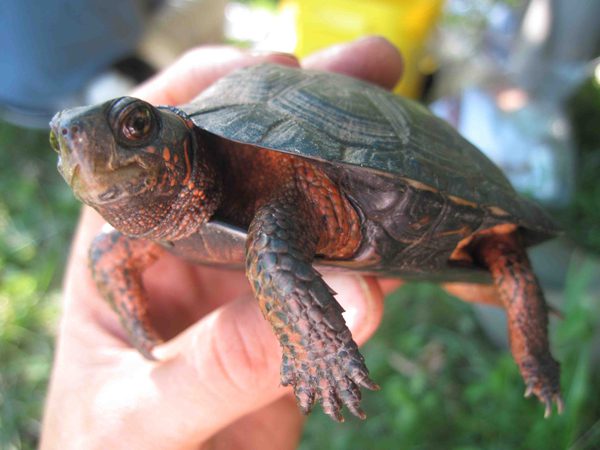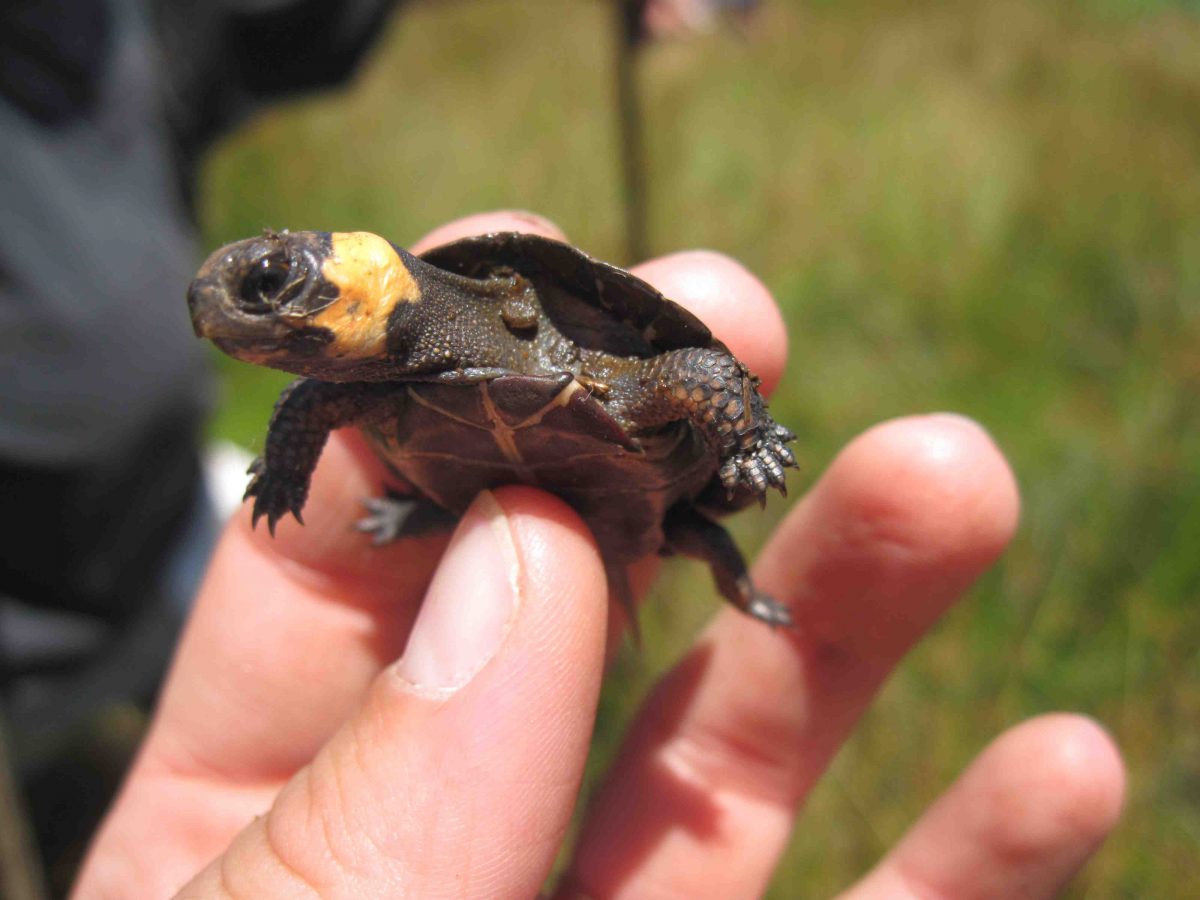Unlikely habitat for a unique herptile

It’s no secret that I love to be outside. Woods, farms, fields, trails, creeks, streams, rivers – if it’s outdoors, you name it and I’m there. Some of my favorite places to explore are the most pristine ones – dark, emerald green forests where rays of sunlight glint through towering spruce, where there’s a distinct scent of fresh earth and moss and where a fallen tree doesn’t have time to decompose before a rhododendron seed sprouts from it. So searching for salamanders in the Smokies would rank high on my list for favorite field (and leisure) activities.
However, I had the amazing opportunity recently to help survey for one unique and rare critter – one that frequently lives in places most of us would consider far from pristine. The bog turtle (Glymptemys muhlenbergii) is the smallest of all North American turtles, on average less than 4 inches in length as an adult. Found only in the eastern United States, they are semi-aquatic and spend most of their time buried in mud.
Bog turtles live in wetlands, usually with springs or seeps, and on the edges of woods. Often these wetlands are found in cow pastures. Rushes, sedges, cattails, sphagnum, grasses and shrubs like willow and alder are some species found in their preferred habitat. They require open canopy, because they spend time basking in sunlight to thermo-regulate. So areas with grazing livestock that keep large trees from crowding in and that create pockets of water and soft mud are some of the best bog turtle habitats.
Bog turtle shells are dark brown to black, and they have a distinctive bright orange spot on each side of their neck. They live in colonies, often with fewer than 20 individuals. They are believed to have gone through a historic genetic bottleneck during the last ice age, and even though populations are sometimes separated by long distances, they are still very similar genetically.
There are northern and a southern populations of bog turtles, separated by a gap that includes West Virginia and most of Virginia. Within their range, individual populations are scattered. The northern population is much larger geographically, covering an area from Connecticut to Maryland, but there are believed to be possibly fewer than 200 bog turtle sites left in the north. (That is only an estimate, and it depends on how an individual “site” is defined). In the South only about 100 to 150 distinct “sites” are known, mainly in the mountains of southern Virginia, North Carolina, Tennessee, and Georgia.
Many of our mountain bogs in the South have dried, and unfortunately that habitat loss and illegal poaching are contributing to a serious decline of bog turtles. Bog turtles are a federally threatened species and protected under the U.S. Endangered Species Act. It is estimated that nearly 80 percent of the colonies that existed 30 years ago no longer have turtles. The International Union of Concerned Scientists red list now calls them critically endangered.
Bog turtles bury themselves in mud and thick grass, so searching for them involves getting down and dirty. I’ve spent many hours flipping rocks and logs looking for salamanders and snakes, but this was the first time I ever went “grappling” for a herp – no easy task, but certainly fun, and incredibly rewarding the few times you actually come up with a bog turtle. They dig down deep in the mud where the water is much cooler than on the surface, and are known to also use holes created by a specific species of crayfish, Cambarus dubius.
Although a small and secretive species, bog turtles are one of our most unusual in the East and certainly one of the rarest.
I appreciate the biologists who search to document and learn about these special creatures, as there is undoubtedly much more to learn. Bog turtle fossils indicate they have been around for more than 300,000 years, and I am hopeful for these little guys, as they’ve survived so long. We should certainly do what we can to help them persist for many generations to come.